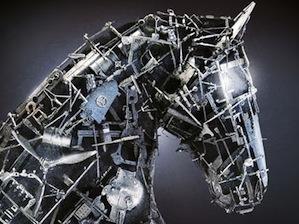Web Gems: Troyens, Spatial Music, Eternal Road
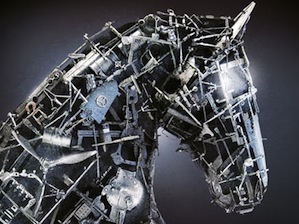
Just a few of the week's streaming opportunities for outstanding musical experiences, even before the huge summer blitz of the BBC Proms, begin on Friday, 11:30 a.m. Pacific Time. It will feature an unusual concert led by four conductors, and works by Mark-Anthony Turnage, Elgar, Delius, and Tippett. (An all-English lineup; expected to do better than Brits in soccer or tennis.)
'Our Les Troyens' in Covent Garden
A new production of Berlioz's complete Les Troyens (running close to six hours), in collaboration with opera companies in San Francisco, Vienna, and Milan, is directed by David McVicar and conducted by Antonio Pappano. To see the entire performance, go to the BBC/Art Council England The Space, and then select the opera.
No schedule has been announced yet for San Francisco, but the word is that the long-promised opera is coming "soon," probably in 2013-2014. Meanwhile, explore The Space, a free mother load of great art. Besides Les Troyens, the site now also offers 18 complete Shakespeare plays in Globe Theatre productions, and the amazing Venus and Adonis, based on a poem by the Bard. The musical is performed by the Isango ensemble from Capetown in a variety of South African dialects, such as IsiZulu, IsiXhosa, SeSotho, Setswana, and Afrikaans.
Spatial Music That's More Than Hype
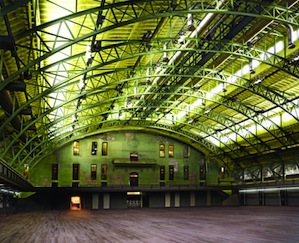
Herzog & de Meuron design
Alan Gilbert conducted the New York Philharmonic in an unusual concert and venue a couple of weeks ago. The Philharmonic 360 event of "spatial music" took place in the Park Avenue Armory, featuring Gabrieli, Ives, Boulez, Stockhausen, and excerpts from Don Giovanni.
Gilbert's explanation:
What music is and what it means to us, how we experience it and the space in which we experience it — these are all questions that have come up in my mind. So I had the idea of building a program around the idea of spatial music; that is, music that relies on physical space, or is about the physical space in which it’s performed.
From Martin Bernheimer's Financial Times review:
Featuring three conductors and a throng of performers, this event was bold and bracing ... America has always loved its wide open spaces. When it comes to concert locales, none is wider and more open — or higher and deeper — than the Park Avenue Armory, built in 1877 and officially called "part palace, part industrial shed."The soaring drill hall, spanning 55,000 square feet, was invaded on Friday by the New York Philharmonic, three conductors, including top maestro Alan Gilbert, and an assortment of opera singers. With the audience camping on the central floor, also seated in tiers and balconies, and with the players spread out in varying configurations, the project offered fascinating explorations of unorthodox spatial, acoustical, and social relations.
The concert is streamed on Medici.TV: Registration is required, but there is no fee for viewing.
Weill and the 17th of Tammuz
For some Americans, Independence Day and summer celebration festivities were put on hold last week as they observed Tzom Tammuz, or the fast of the 17th of Tammuz. The fast commemorates one of the most ominous days in Jewish history when Moses, descending from Mt. Sinai, learned that his people had begun to worship the golden calf in his absence and, in his anger, broke the first set of tablets.
Kurt Weill depicted both Moses receiving the Commandments and the famous dance around the golden calf in scene 20 of his epic pageant pageant The Eternal Road. The Milken Foundation is streaming excerpts from Weill's work — use the "Show Tracks" box on the right.
Urbanski Succeeds Luisotti in Tokyo
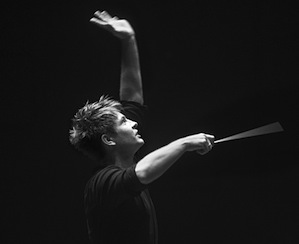
San Francisco Opera Music Director Nicola Luisotti, recently appointed as music director of Teatro di San Carlo of Naples, is leaving the Tokyo Symphony as its principal guest conductor. The position is going to the young Polish conductor Krzysztof Urbanski, music director of the Indianapolis Symphony, and chief conductor of Trondheim Symfoniorkester.
Asked about the timing of the turnover, Tokyo Symphony's Midori Takase said Luisotti remains with the orchestra until next March, and the new principal guest conductor starts in April.
Luisotti told SFCV that the combination of his new position at San Carlo and increased offers for guest conducting with symphony orchestras and opera houses worldwide "just made it very difficult to give Tokyo Symphony the time that the position required." He added that he has "enormous respect" for the company and wants to find time to conduct in Japan occasionally.
Talking Hoffmann with Pippin
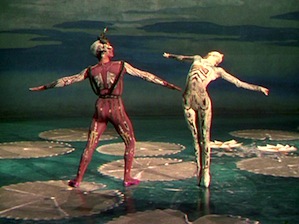
For free! Pocket Opera's Donald Pippin — getting ready for a production of Offenbach's The Tales of Hoffmann, — will discuss the composer and the work at an event hosted by, and in, the Peninsula del Rey at 3 p.m. on July 15.
To sweeten the already attractive pot, attendees will be served hors d'ouvres and champagne. Eight Pocket singers will participate in the discussion. The only catch: RSVP by tomorrow by calling (650) 741-1564.
Pippin and Offenbach go back a long way; Pocket Opera has produced many of the French master's works, including La Perichole and La Belle Helene.
The new Pocket Hoffmann will open in San Francisco on July 22, featuring Kindra Scharich, Chelsea Hollow, and J. Raymond Meyers in the title role.
In other Pocket news, the 35-year-old company is planning to return to the Florence Gould Theatre in the Legion of Honor. Other companies gave up the on venue when rent was raised dramatically, but it is such favorite of audiences that Pippin is attempting to raise funds to return at least on a few dates.
Costume Designer Pakledinaz Dies at 58
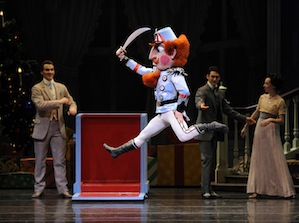
Photo by Erik Tomasson
Beginning in the early 1990s, Pakledinaz worked with San Francisco Ballet, designing for choreographers such as Mark Morris, SFB Artistic Director Helgi Tomasson, and Christopher Wheeldon. Tomasson commented on the news:
Martin was not only a wonderful collaborator but also a good friend. For over 15 years, I’ve had the privilege of working with him and seeing his extraordinary designs come to life on stage. His diverse body of work included notable ballets, both short and full-length, such as my most recent productions of Nutcracker and Don Quixote, Christopher Wheeldon’s Within the Golden Hour, and Mark Morris’ Sylvia, to name a few. Martin was incredibly talented, and original, and he will be greatly missed.
Sacramento Opera on the Mend, Into Market Research
There is good news and a headscratcher from Sacramento Opera. The company canceled the spring season last year, just one of the legions of performing arts organizations hit hard by the Great Recession, but General Director Rod Gideons says things are looking up:
I am both pleased and much relieved to announce Sacramento Opera just completed its fiscal year on June 30 with a modest budget surplus, which included a $75,000 repayment to our cash reserves.During the 2011-2012 season, despite Draconian cuts in our operating budget, we presented "Opera at the Cathedral" in October, an evening of opera arias from works selected by our patrons. This event was held in the beautiful surroundings of the Cathedral of the Blessed Sacrament in downtown Sacramento, and we accommodated some 1,000 in attendance. Then, in November we collaborated with the Sacramento Philharmonic Orchestra in a production that featured the orchestra in selections from opera, and a fully staged production of Pagliacci in the second half. Finally, in February we produced Rigoletto, which again was highly popular and very well received by our patrons.
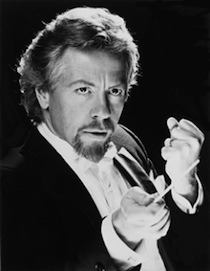
Having summed up the situation in such a simple, clearheaded way, Gideons then tells of a campaign "to gather data," which — to me, at least — seems to have little practical value:
We will spend one more year in very safe territory as we work with a variety of consultants (thanks to the James Irvine Foundation) to better understand our existing audiences and the obstacles preventing the Sacramento Community and Region at large from greater participation.Beyond giving in to the lure of consulting wisdom, Gideons does have specific plans for the company: Opera concerts Oct. 4 and 7 in the Crest Theater; The Barber of Seville Nov. 16 and 18 in the Sacramento Community Center Theater, and on Feb. 22 and 24, and evening of Puccini heroines and a staged production of Gianni Schicchi.Information will be collected through a variety of online and written surveys, and focus groups all of which is being developed, analyzed and facilitated by LPC Consulting Associates, Inc., Research & Evaluation Specialists. The information will be used in the development of what is envisioned to be a rather bold future for this organization.
Michael Morgan will return to conduct the company, and Thomas Conlin, new to Sacramento, leads Il Barbiere.
Callas, Mrs. Beverly, and Local Opera Lore
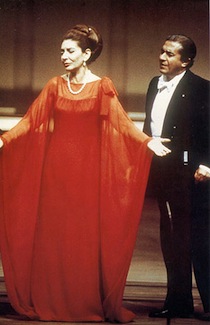
Thanks to Max Paley and La Cieca, Opera-L posts have resuscitated the fabled story of the clash between titans Maria Callas and Kurt Herbert Adler, which resulted in La Divina never appearing in a San Francisco Opera production.
Callas did sing in the War Memorial, on May 9, 1974, as part of her final and disastrous farewell tour, with tenor Giuseppe di Stefano and pianist Robert Sutherland. You can actually hear that concert and the poor condition of both their voices.
I heard about the concert from Mrs. Beverly, the legendary Opera House usher, when I interviewed her on the 50th anniversary of her reign over the orchestra level.
I asked what single experience stood out in her mind. Apparently, she didn't much like opera ("it's just a job"), but remembered when Callas sang.
What did she sing that did the trick? It wasn't her singing, Mrs. B. said, but Callas' entry to the stage, as she "picked up the end of her shawl and tossed it over her shoulder." The highlight of a half century with opera, verily.
(During the interview, Mrs. B. also relived the stressful first day of Adler's order not to let anyone — and he meant anyone — be seated once the curtain went up. Illustrious society figures, used to wandering in and out during performances, confronted the usher physically, and according to her, pinched and twisted various places of her anatomy. Ushering at the opera requires acts of heroism.)
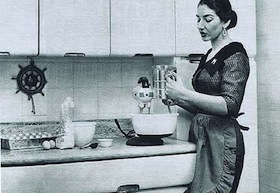
When I recalled the story, SFO veterans responded. Peggy Houdek wrote:
What fun to be reminded of Mrs. Beverly. We always chuckled over the chopsticks she usually wore in her hair. We thought they were really to poke people who tried to sneak into seats! She was, however, wonderful to those of us on the staff when she could find an empty seat for us.Suzanne Turley also remembered the late usher whose first name was similar to Turandot's — unknown:
Sigh. We called her "Chopsticks." Fond and prickly memories of her as a nightly standee. She was feared. It was clear that she was not there for the opera but to do her job. She has a lot to contend with, especially some of the more rude and aggressive standees.Her job included opera, symphony and ballet. Her gentle husband, Walter, was the St. Peter of the Green Room.
She was right about the tossing of the shawl in '74, which was a long chiffon stole. A slightly mad standee got a photo, God knows how, of Callas reaching across the footlights to accept a large bouquet that night.
The night Callas died, a framed picture of her was placed on the North Box Bar, with a large bunch of violets, as a kind of altar. Adriana Lecouvreur was on the stage. Not a dry eye in the bar.
I never saw her in a staged role, but somehow got to her big concert in the Civic Auditorium, in '56, I think. That was a night to remember.
ZOFO on the March
Following closely the release of Mind Meld, ZOFO's Eva-Maria Zimmermann and Keisuke Nakagoshi are working on their second album, the San Francisco pianists ready to record MOSH PIT: American Dances for 20 Fingers in September.The album will include:
Gershwin: Cuban Overture
Barber: Souvenirs
John Corigliano: Gazebo Dances
Allen Shawn: Three Dance Portraits
Conlon Nancarrow Sonatina
Paul Schoenfield: Five Days from the Life of a Manic Depressive
The Stoltzmans at Yoshi's
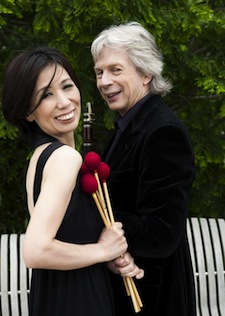
Clarinetist Richard Stoltman will appear with the Mika Stoltzman Quintet for one concert tonight at Yoshi's San Francisco.
Mika Yoshida Stoltzman, the wife of the clarinetist, is a marimba jazz virtuoso, whose CDs include Mitsue, Marimba Phase, and Mikarimba
Her live DVD, recorded in 2010, is Marimba Madness, with drummer Steve Gadd, bassist Eddie Gomez, and pianist Peter John Stoltzman.
She premiered John Wyre’s Moonlight for marimba and orchestra with the Kyushu Symphony, and Bill Douglas’ Marimba Concerto with the Kumamoto Symphony Orchestra. She was also guest soloist with the Krakow Philharmonic in Poland, and Szombathely Symphony Orchestra in Hungary.
Her arrangement and performance of Tokyo/Vermont Counterpoint appears on Steve Reich’s CD Triple Quartet.
Merola Sensations of 2012
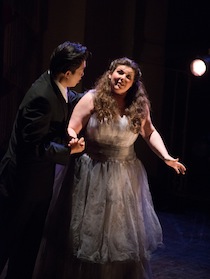
Photos by Kristen Loken
It's predictable that the 55th season of the Merola Opera Program would introduce the kind of explosive talent as the previous half-century-plus has, but it was still a delightful surprise to hear this group for the first time last week.
The public debut of participants in the 10-week program, now at the midpoint, took place in the Herbst Theatre Schwabacher concert on Thursday, repeated Saturday at Yerba Buena Gardens. The San Francisco Opera Orchestra, with many substitute players, played splendidly under the baton of Giuseppe Finzi. In place of a traditional — and superfluous — Rossini overture, the opening work was a rousing performance of an orchestral interlude from Donizetti's Roberto Devereux.
Instead of the usual varied selection of arias, duets, and ensembles, this concert presented extensive scenes from only four operas. First came a good chunk of Act 2 from Donizetti's Anna Bolena, with Melinda Whittington in the title role (and a dramatic, if slightly oversung, performance), Erin Johnson as Seymour. As usual, Opera House-sized voices in Herbst, one-third the size, tend to overwhelm.
Then the highlight of the evening, Boito's Mefistofele — the Easter Sunday and Death of Margherita scenes — with a young Chinese tenor, Chuanyue Wang, singing a magnificently Italian Faust, with Elizabeth Baldwin's dramatic, affecting Margherita and Andrew Kroes' powerful Mefistofele.

Wang is special. He goes to the heart of the music, with a gorgeous tone, velvet-smooth legato, effortless elegance, a commanding presence in the voice, and great Italian diction (running into trouble only with the "c" of "pace," substituting "zh"). Baldwin and Kroes, both young and ferociously talented, were right up with Wang, the trio lifted on the stormy waves from the orchestra, Finzi keeping a fine balance.
The third offering was Act 2 of Bizet's La Jolie Fille de Perth, pretty enough, but not a showcase, which defeats the purpose of the Schwabacher Concert to provide the initial introduction to the Merolini; with a seven-singer ensemble it's hard to distinguish between unknown singers. Given those handicaps, Whittington's Cathérine Glover, Yu Li's Henri Smith, and, especially, Hadleigh' Adams' drunk Ralph commanded attention.
Closing the evening, a climactic scene of Stravinsky's The Rake's Progress pitched Tom Rakewell (Joshua Baum) and Nick Shadow (Seth Mease Carico) against one another in a fatal card game, with Baldwin's Anne Trulove heard from offstage. The ensemble in the closing Epilogue had a great impact, all voices were still fresh after the extensive program.
Roy Rallo's staging began with simplicity rarely provided by this always over-busy director: a single chair, staying upright, for Bolena. Soon enough, needless and distracting shtick began, especially the use of floodlights on both sides of the stage, casting giant shadows of the singers. By Rake, there were many chairs, overturned, portraying tombstones. What if staging just supported the introduction of young artists, instead of showing off the director?
Wrestling Against Music
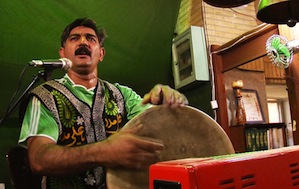
Zurkhaneh is a traditional gymnasium in Iran, Azerbaijan, Iraq, Turkey, and Afghanistan. The Iranian national sport, called Varzesh-e Pahlavani, is practiced in the zurkhaneh. The word refers to an octagonal pit in which athletes train to the sound of a trio of musicians, playing such traditional Eastern instruments as the kamancha, zurna (double reed) and naghara (drum).
You can experience it all with Zurkhaneh — the House of Strength, a documentary scheduled for a free screening, courtesy of the Tiburon Film Society. The event is at 6 p.m. on Aug. 7 at the Bay Model in Sausalito. From the description of the film:
Music and martial arts performances are woven into encounters with vivid human experiences as athletes, musicians and experts reveal a variety of subjectivities, perceptions and struggles within the religious, ethical and social world of Zurkhaneh.What emerges is the integration, but also the tensions, between the ethical and competitive aspects of Iranian martial arts, between Sufi-inspired mysticism and the religiously-inflected nationalism of post-revolutionary Iran, between grassroots community engagement and Olympic aspirations.
Israeli Theater Piece About Wagner
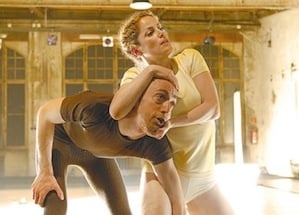
Photo by Dieter Hartwig/Haaretz
Israeli choreographer Saar Magal's forthcoming stage work deals with the way Richard Wagner's works have been received in her native country — which is to say, not at all. Wagner's anti-Semitic ideas and the use to which his music was put during the Nazi period have led to a ban on the composer in Israel, and sporadic performances of his music there triggered bitter clashes.
Hacking Wagner will be premiered at the Munich Opera Festival on July 27 in Haus der Kunst.
Magal, a grandchild of Holocaust survivors, approaches Wagner and Ring des Nibelungen from scratch, as it were. She says:
Because I come from a culture that doesn't listen to Wagner and forbids listening to Wagner, I wanted to ask, who is Wagner? What is Wagner? What does his music tell us?Essentially, I decided to put on stage the argument about hearing Wagner — and the whole issue of artistic-political censorship — as well as the issue of tendentious art, since the Nazis misused his music.
Hacking is not opposition for its own sake, but rather a demand for the right to find out, for ourselves, what this empty space means: this glaring absence of Wagner from our culture; as well as the significance of Wagner, and the chords of sanctity and holiness which it strikes in German culture.

